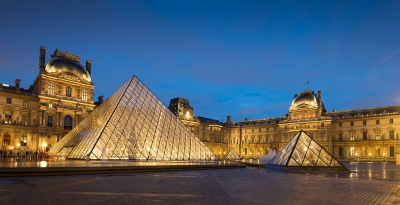
Museums are treasure troves of history and culture. So how about taking a look at toy museums that can send us on a nostalgic trip down memory lane?
THE NATIONAL FARM TOY MUSEUM – U.S.
An ode to the farming industry, the National Farm Toy Museum in Iowa, U.S., is unique as it celebrates the spirit of farming. The history of agriculture is narrated through thousands of farm toys. The collection includes scale models, replicas, old wood-pressed lithograph farm toys and other toys based on farm equipment.
POLLOCK'S TOY MUSEUM – U.K
This is U.K.'s oldest toy museum. With curios and toys from the past, the Pollock's Toy Museums in central London displays over 20,000 teddy bears, dolls, games, toy theatres and so on. The museum was named after printer Benjamin Pollock. Sadly the museum shut its doors a few days ago with the owners unable to get a fresh contract on the building. Now, they are out with a fundraising appeal.
BRIGHTON TOY AND MODEL MUSEUM – U.K.
With more than 10,000 toys and models, the Brighton Toy And Model Museum in England is a major tourist attraction. Founded in 1991, one of the museum's most prized collections is the model train collection. The large operational model railway layouts and period pieces are exhibits to watch out for.
THE STRONG NATIONAL MUSEUM OF PLAY- U.S.
Be it experiencing the most famous children's television series "Sesame Street' all over again or walking amidst the adventurous world of superheroes or checking out toy artefacts such as paper dolls, yo-yos, wind-up toys or teddy bears, The Strong National Museum of Play in Rochester, New York, has everything to transport you to the realm of fun and frolic. It started off as a museum showcasing the personal collection of Margaret Woodbury Strong, the museum's founder. Now, it has a range of exhibits such as unique toy heritage items, vintage paper dolls, early LEGO building sets, Barbie dolls, and so on.
SHANKAR'S INTERNATIONAL DOLLS MUSEUM – INDIA
A museum established by noted political cartoonist K. Shankar Pillai, the Shankar's International Dolls Museum features a grand collection of costume dolls. Located in Children's Book Trust building on Bahadur Shah Zafar Marg, New Delhi, the museum has a large array of dolls collected from across the world including authentic Indian costume dolls. The Museum's collection of costume dolls was inspired by a gift. In the early fifties, Shankar received a doll as a gift from the Hungarian Ambassador. The doll was to be given away as a competition prize. But Shankar was smitten by the doll and kept it for himself after taking permission from the Ambassador. Over time, he started collecting costume dolls and holding exhibitions. But the constant travel, packing and unpacking significantly damaged the dolls over time which Shankar spoke about during an exhibition in Delhi that was visited by the then prime minister Jawaharlal Nehru and his daughter Indira Gandhi who suggested setting up a permanent museum for the dolls. And thus was born Shankars International Dolls Museum.
ST. PETERSBURG TOY MUSEUM RUSSIA
At St. Petersburg Toy Museum, Russia, toys are not just considered playthings but also works of art. Featuring a grand collection of more than 17,000 items, the museum is home to Russian and foreign games and toys that even date back centuries. The collection includes thematic toys, folk toys, artisanal toys, factory toys, and the most famous toys made in Sergiyev Posad- the matryoshka dolls, among others.
Picture Credit : Google



